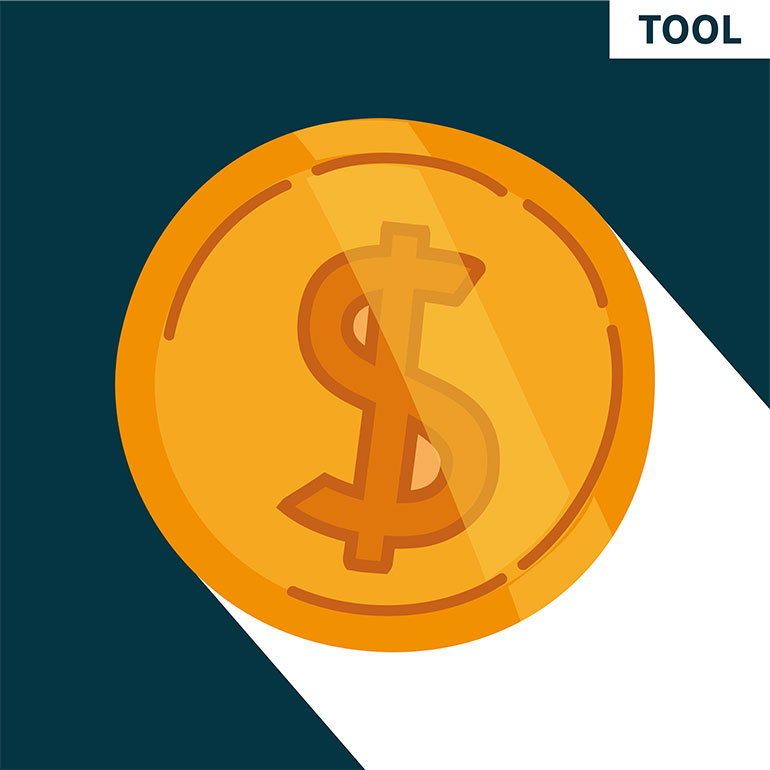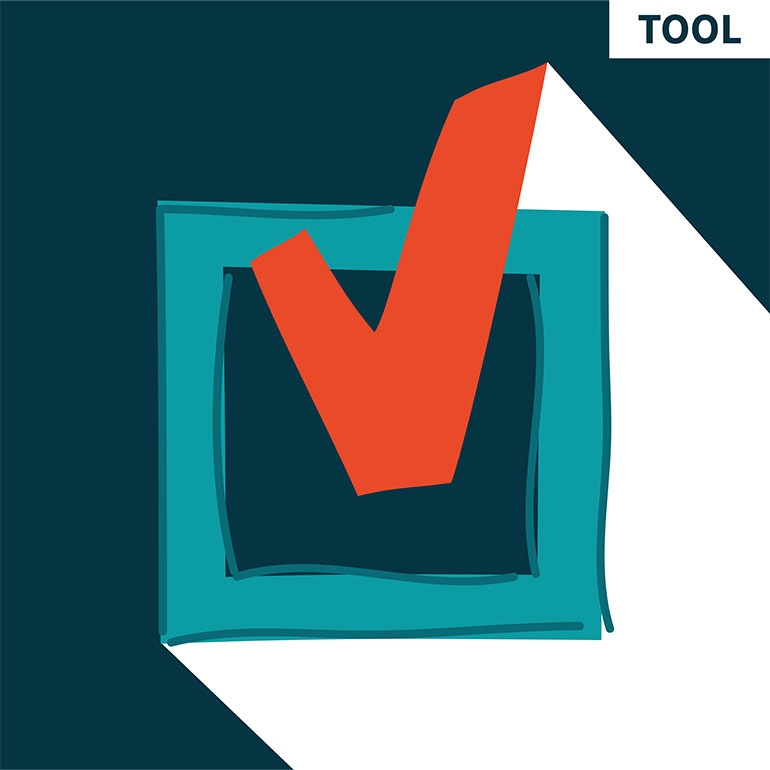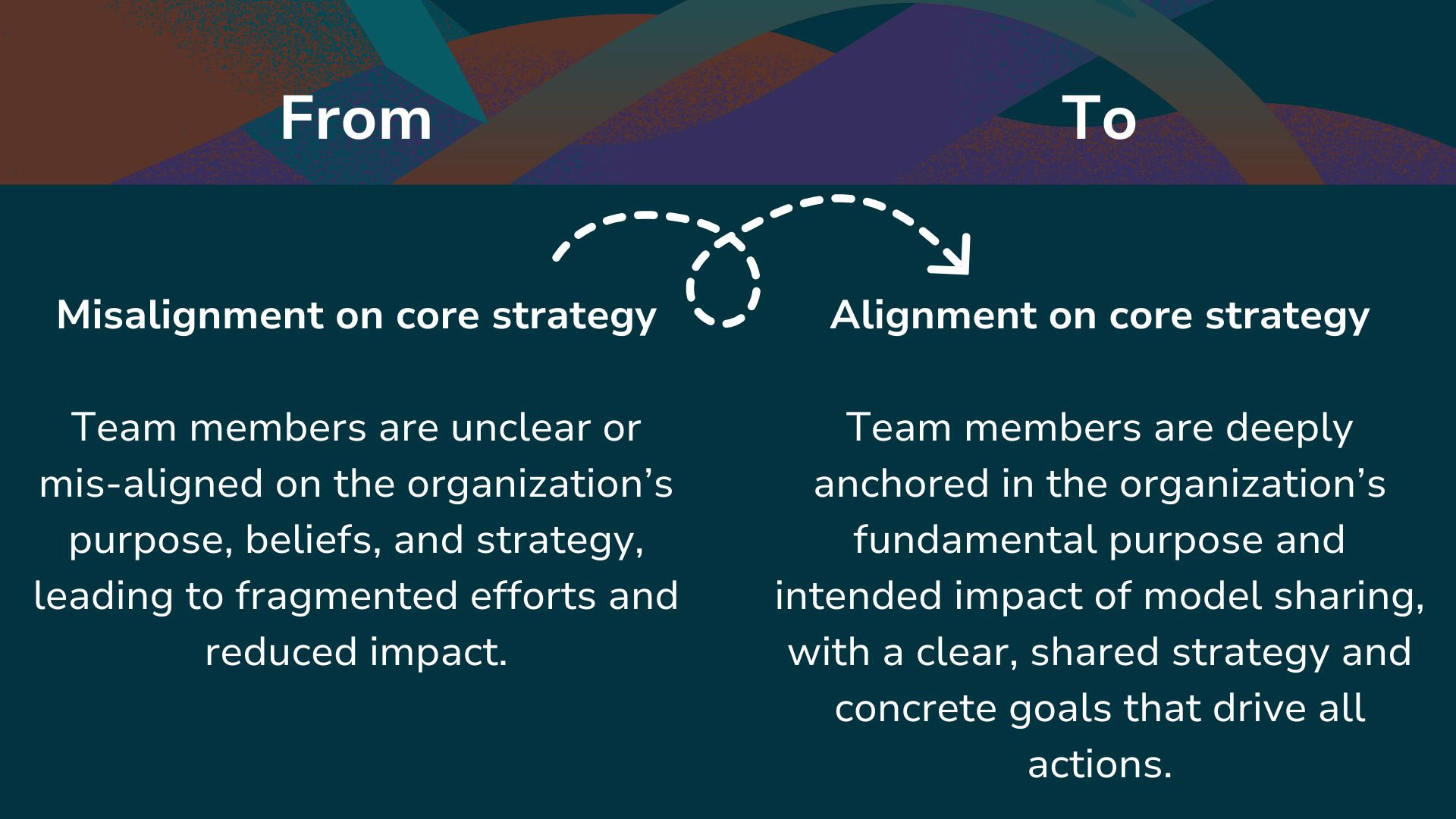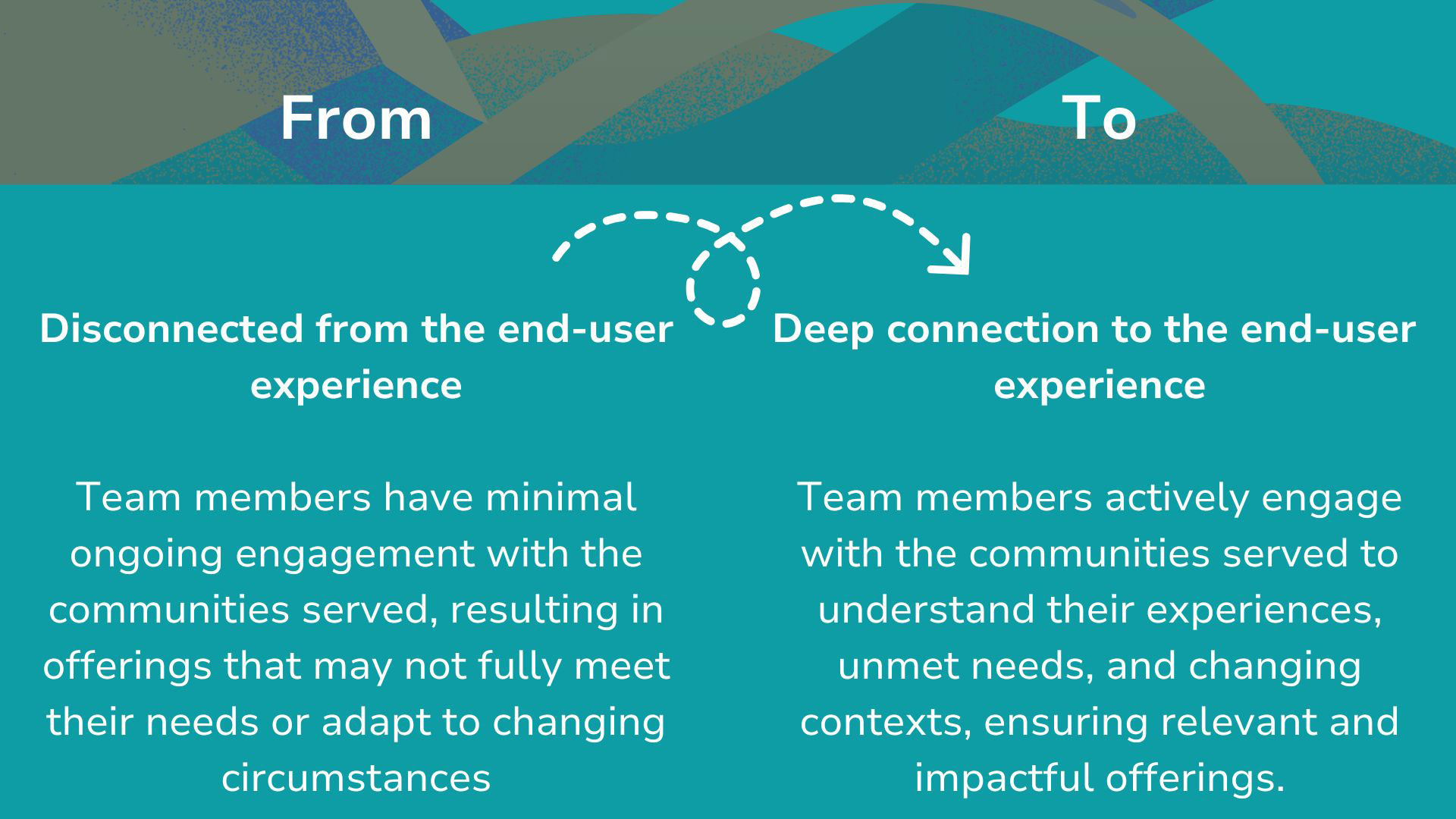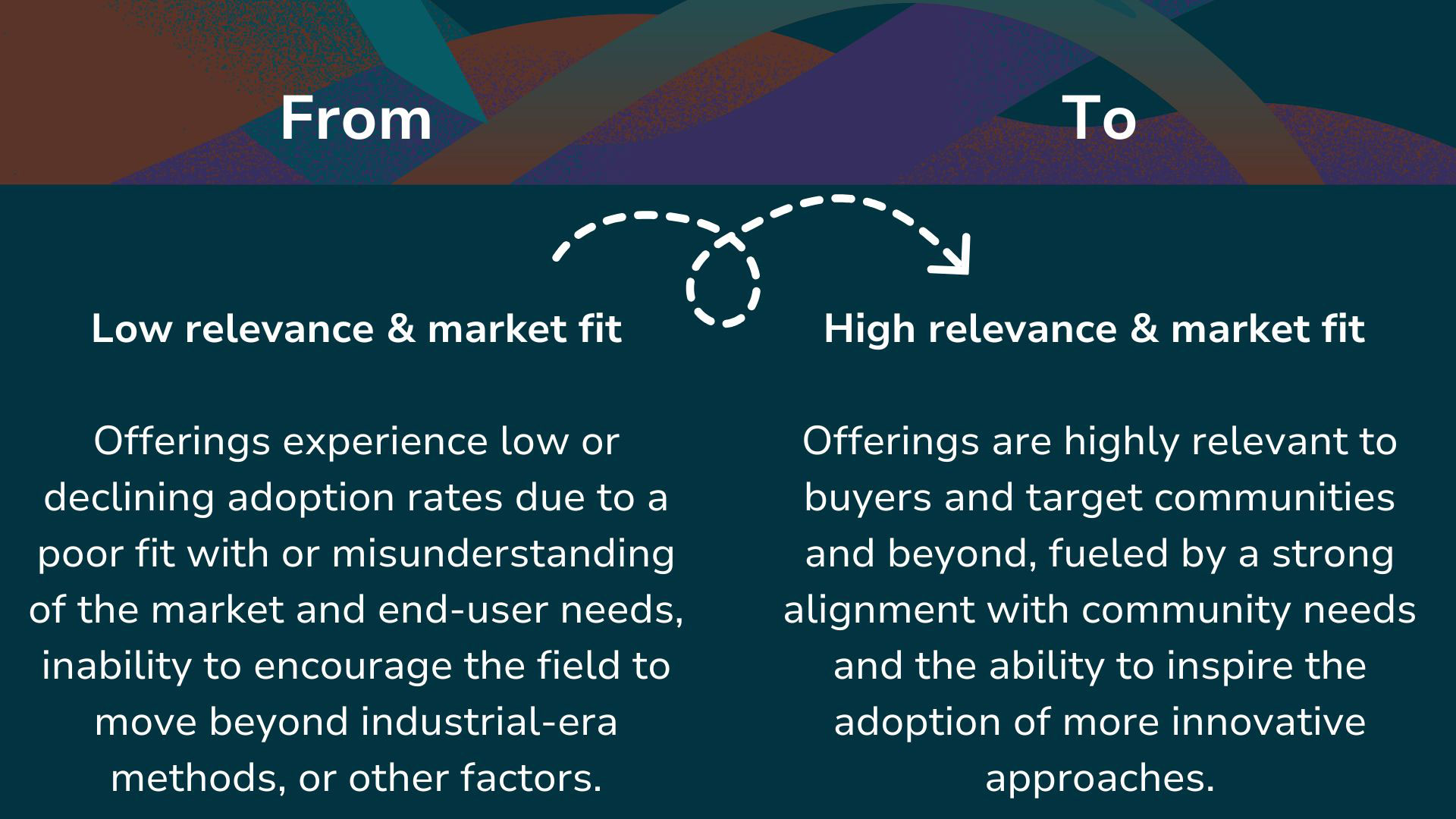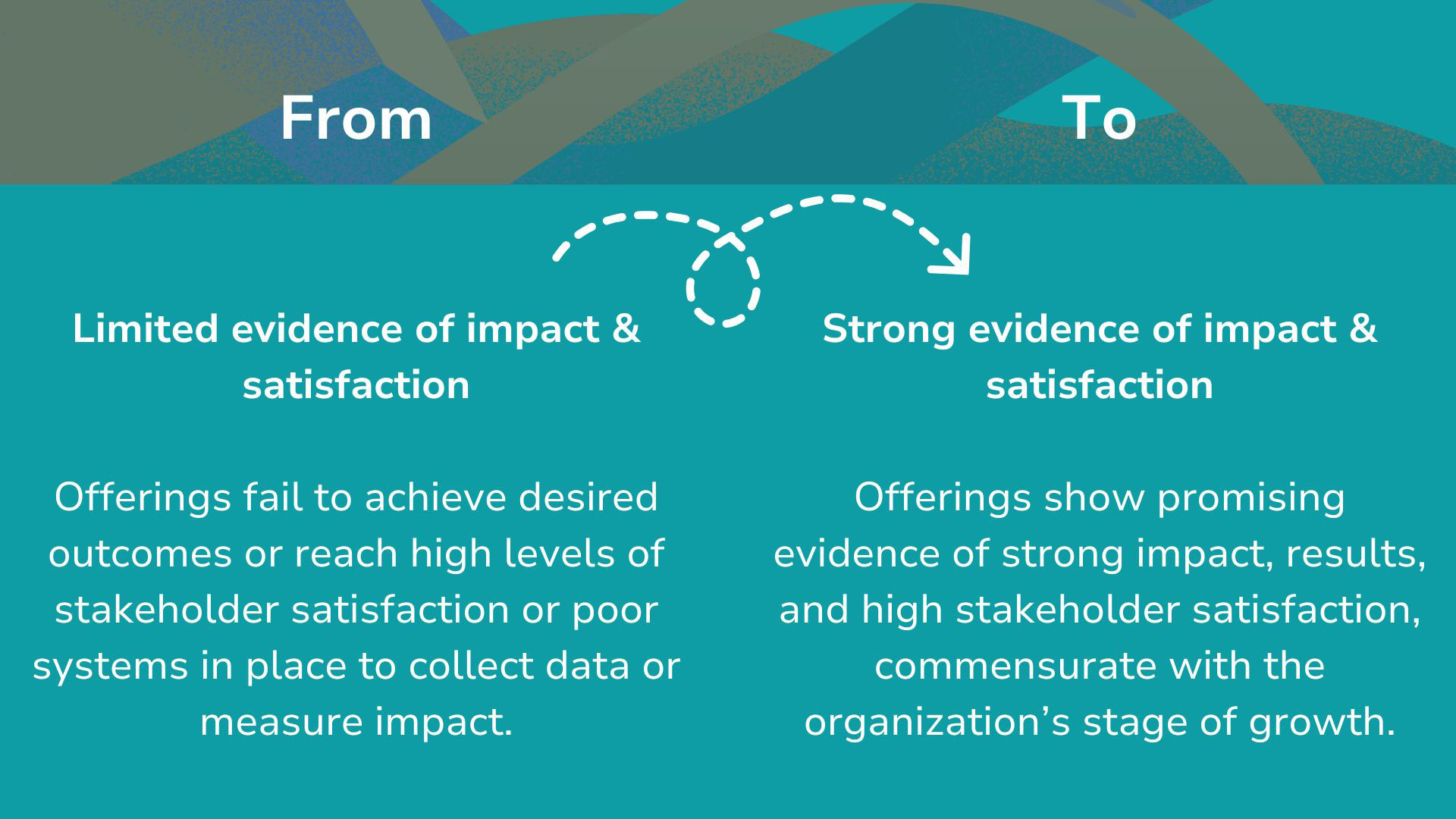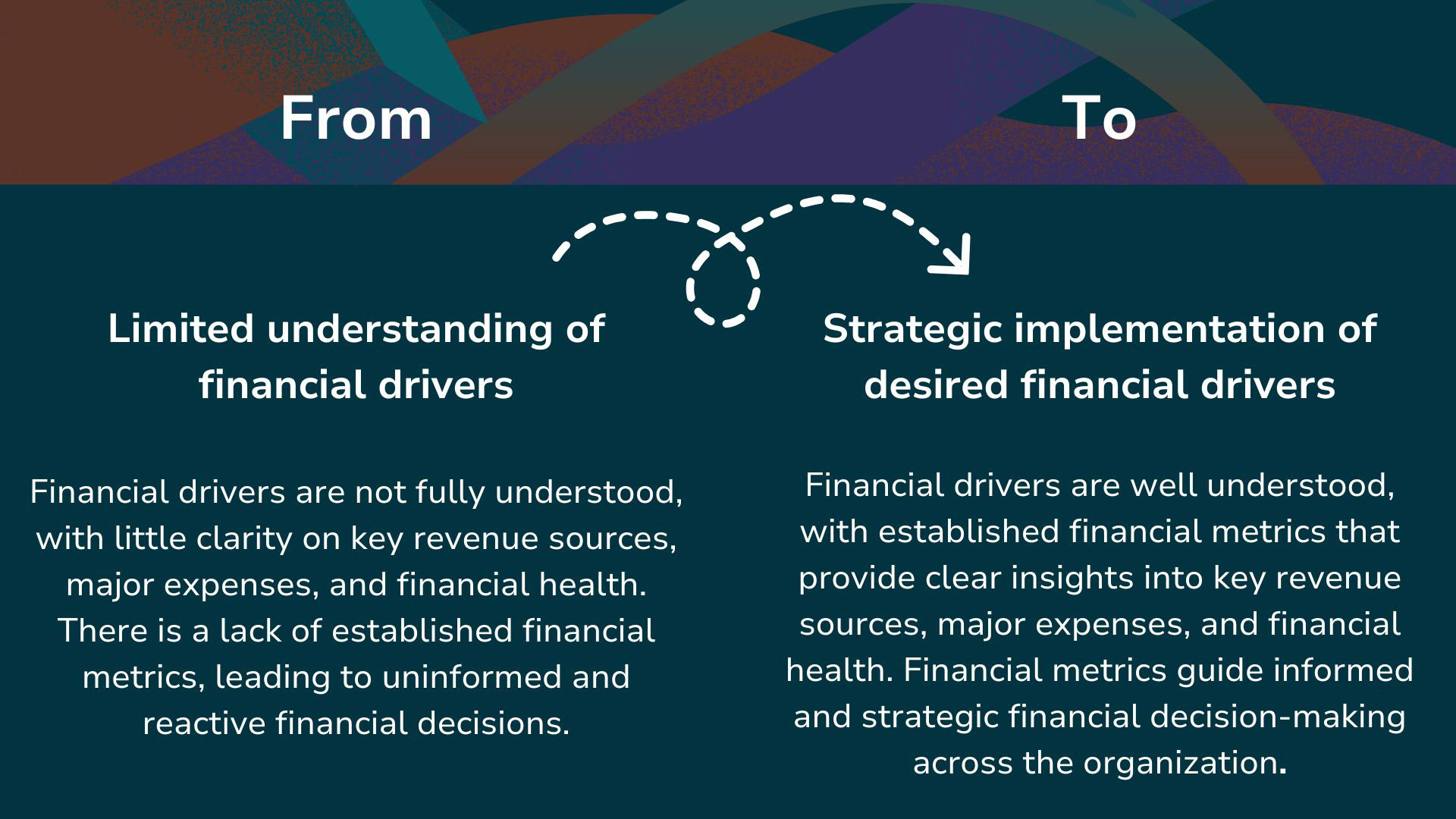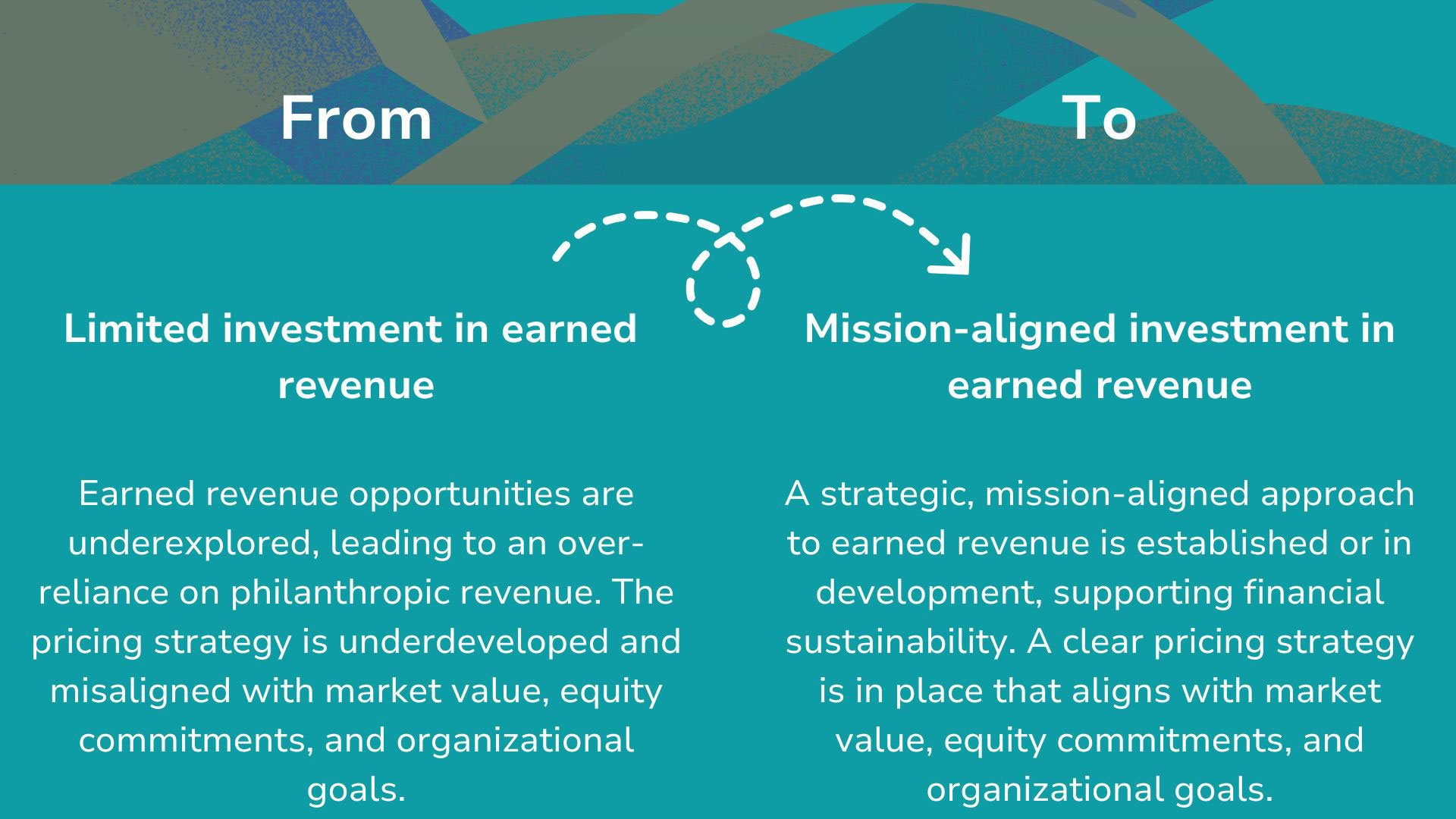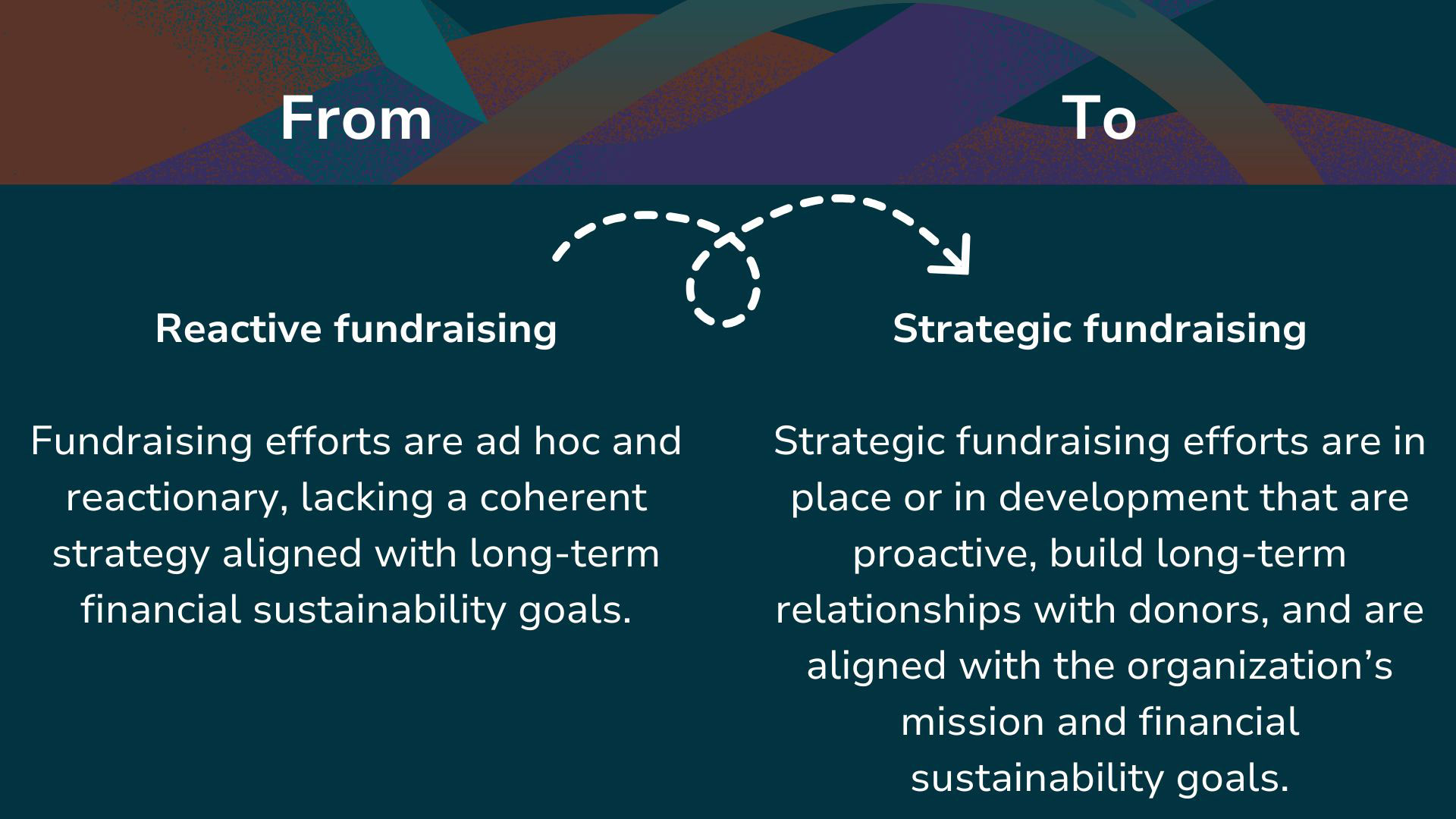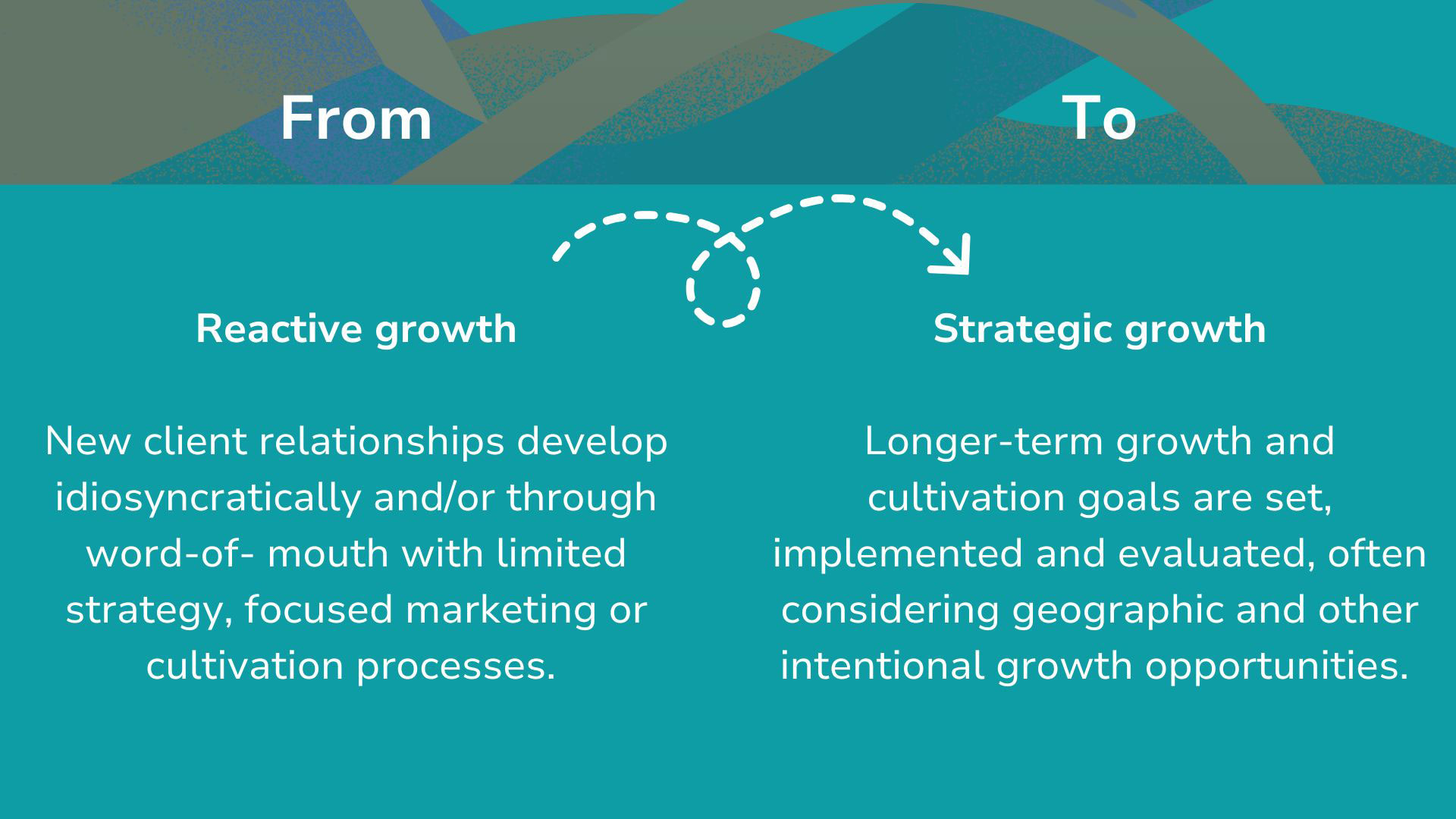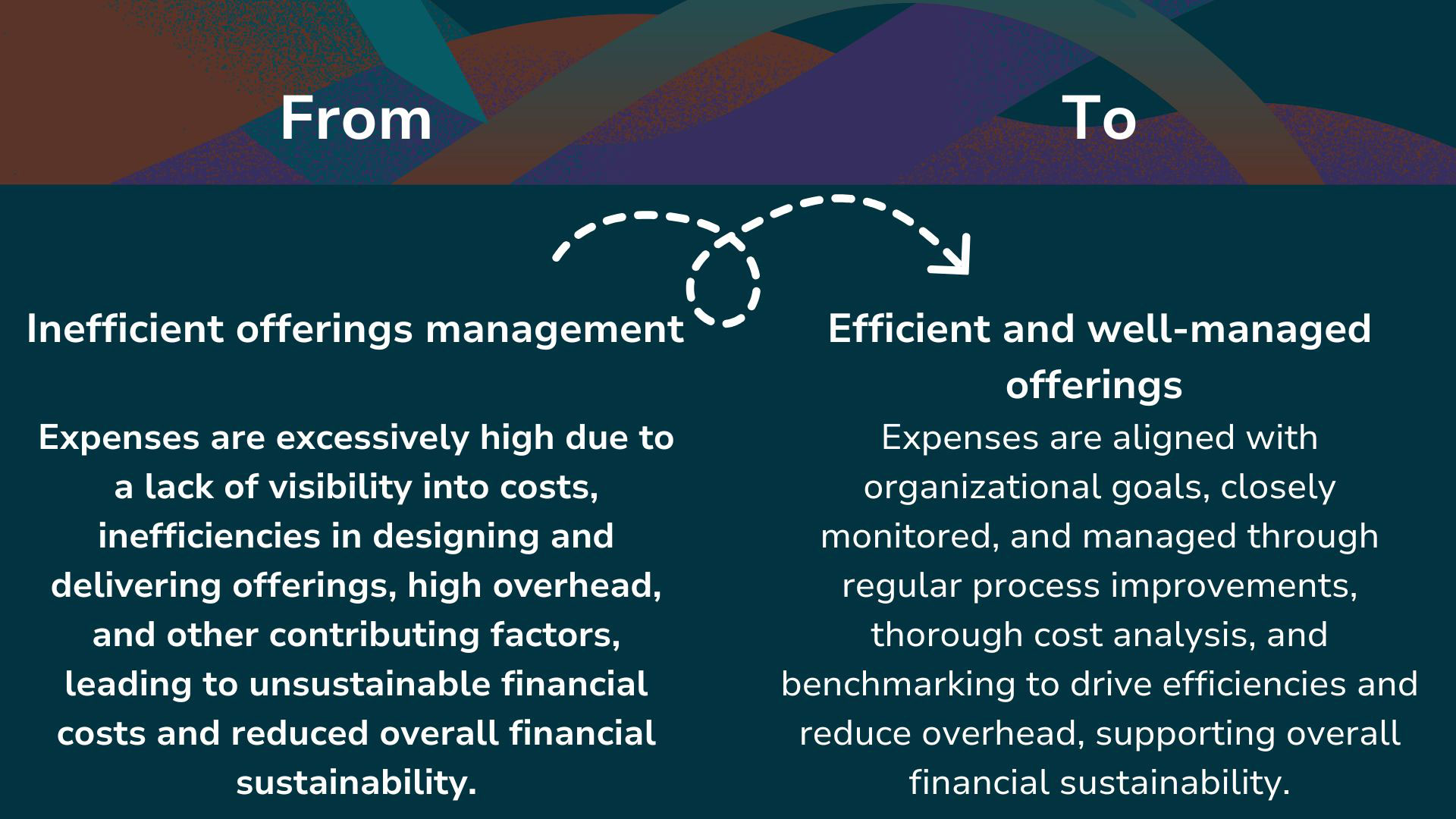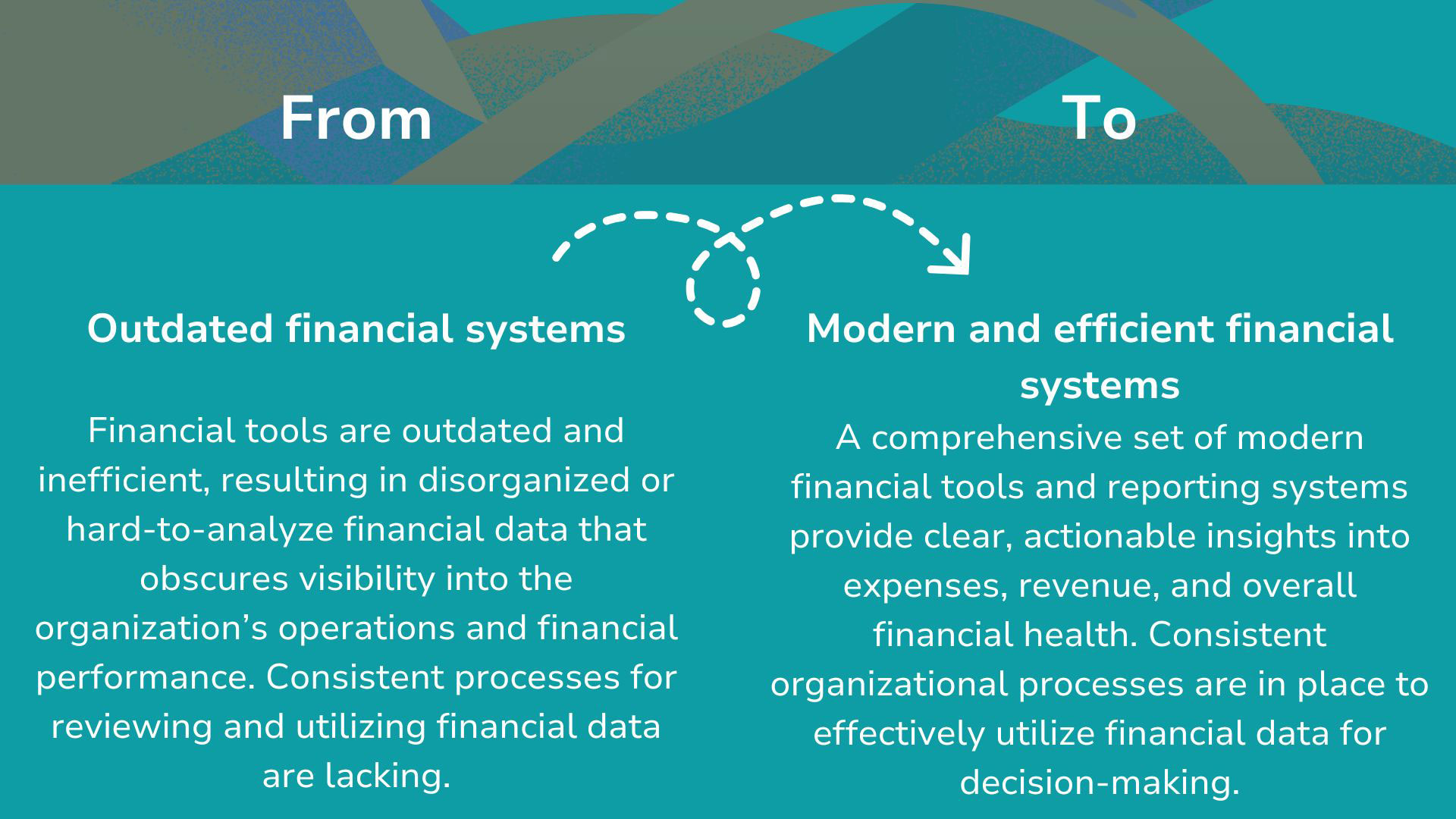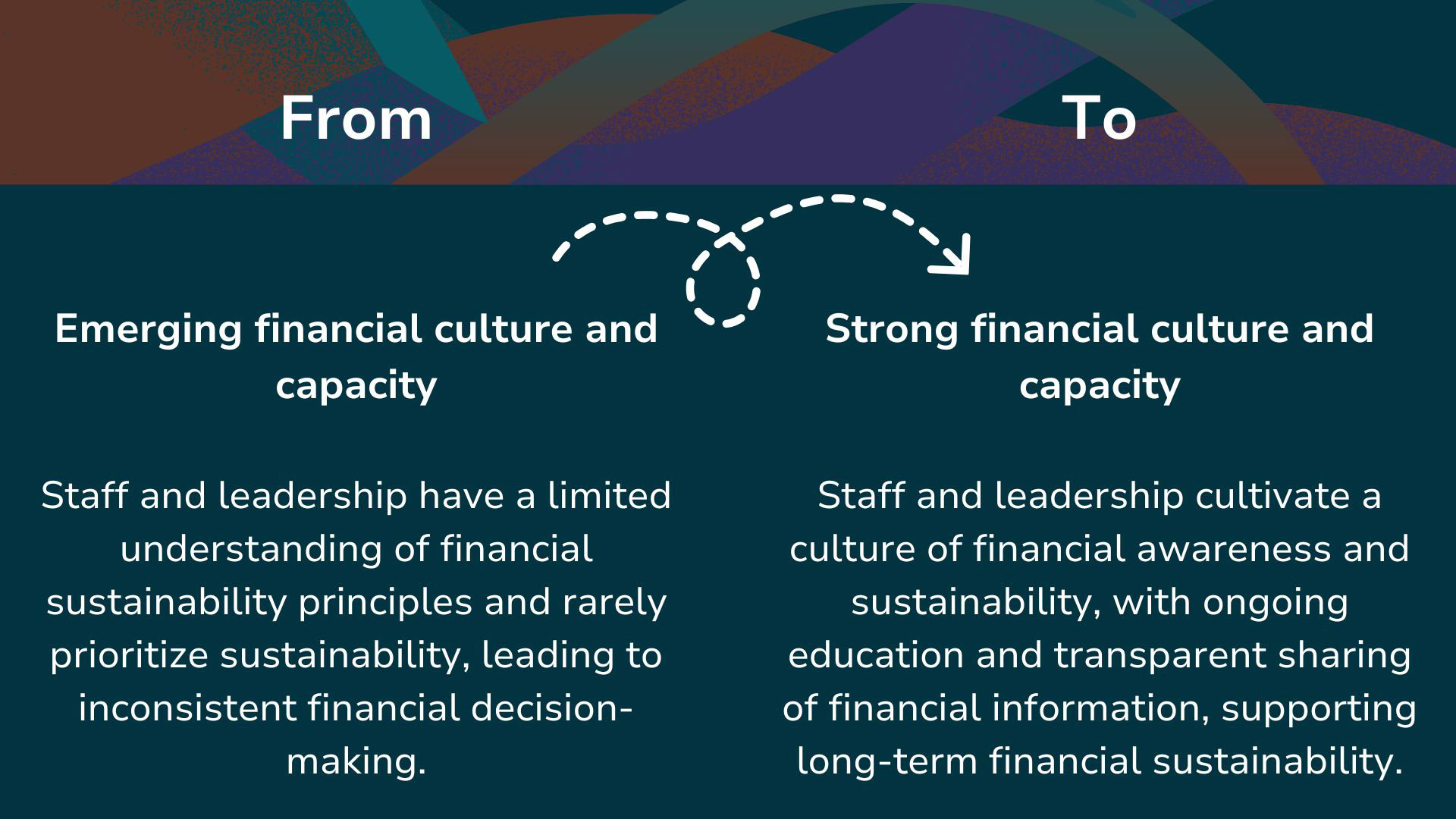The Pricing Toolkit
Practical tools to help you price your offerings in ways that reflect your values, increase accessibility, and support long-term financial sustainability.

Quick Links
Set Prices That Reflect Your Mission and Impact
Pricing is more than just a number—it’s a reflection of your mission, the value you deliver, and your commitment to sustainability and equity.
Done thoughtfully, strategic pricing helps you:
- Communicate the full value of your offerings to partners
- Expand access to under-resourced communities without compromising financial health
- Cover your true costs and build toward long-term sustainability
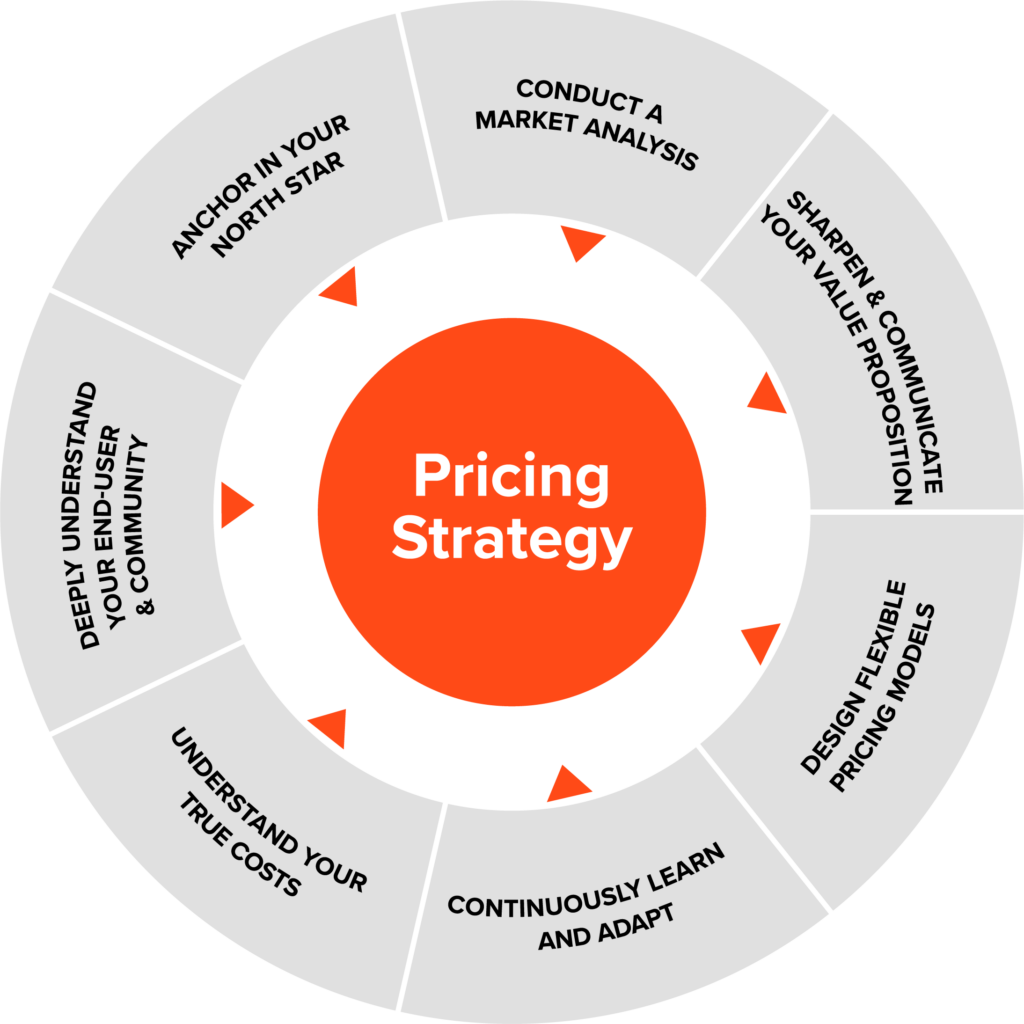

Not sure where to start?Take Our 5-Minute Pricing Diagnostic
Financial Sustainability Primer
What Is Pricing Strategy?
Pricing strategy is the intentional set of decisions your organization makes about how much to charge, to whom, and why.
At its core, pricing strategy requires making thoughtful decisions across several key dimensions:

Together, these dimensions form the backbone of a pricing strategy that is not only financially sound, but also values-driven, equity-centered, and adaptive to real-world constraints.
What shared language can help teams with pricing strategy conversations?
Developing a strong pricing strategy often requires collaboration across teams—program, finance, development, and leadership. But misalignment can arise quickly when not everyone shares a common understanding of core financial and pricing terms. In fact, a lack of shared language is one of the most common internal barriers model sharers face when trying to set or adjust pricing.
The glossary below defines foundational terms in clear, accessible language to help teams align more easily, make informed decisions, and move forward together in their pricing strategy journey.


What are common pricing traps?
In the early stages, model sharers typically begin by relying entirely on philanthropy to launch their models and offer low-cost or free options to schools. This approach allows organizations to quickly test, refine, and demonstrate impact. As model sharers mature, many shift toward adopting a cost-coverage approach, where pricing is set based on the straightforward calculation of covering service-delivery costs.
While cost-based pricing provides simplicity and initial predictability, relying solely on this approach has significant limitations. Without a more nuanced pricing strategy, model sharers risk:
- Leaving potential revenue on the table, limiting financial sustainability.
- Creating unintended barriers to access for those they most aim to serve.
- Missing opportunities to strategically price offerings for broader mission impact.
Through collaboration with model sharers and education nonprofits, we've identified the common pricing traps. These traps, along with their negative implications, are outlined below:
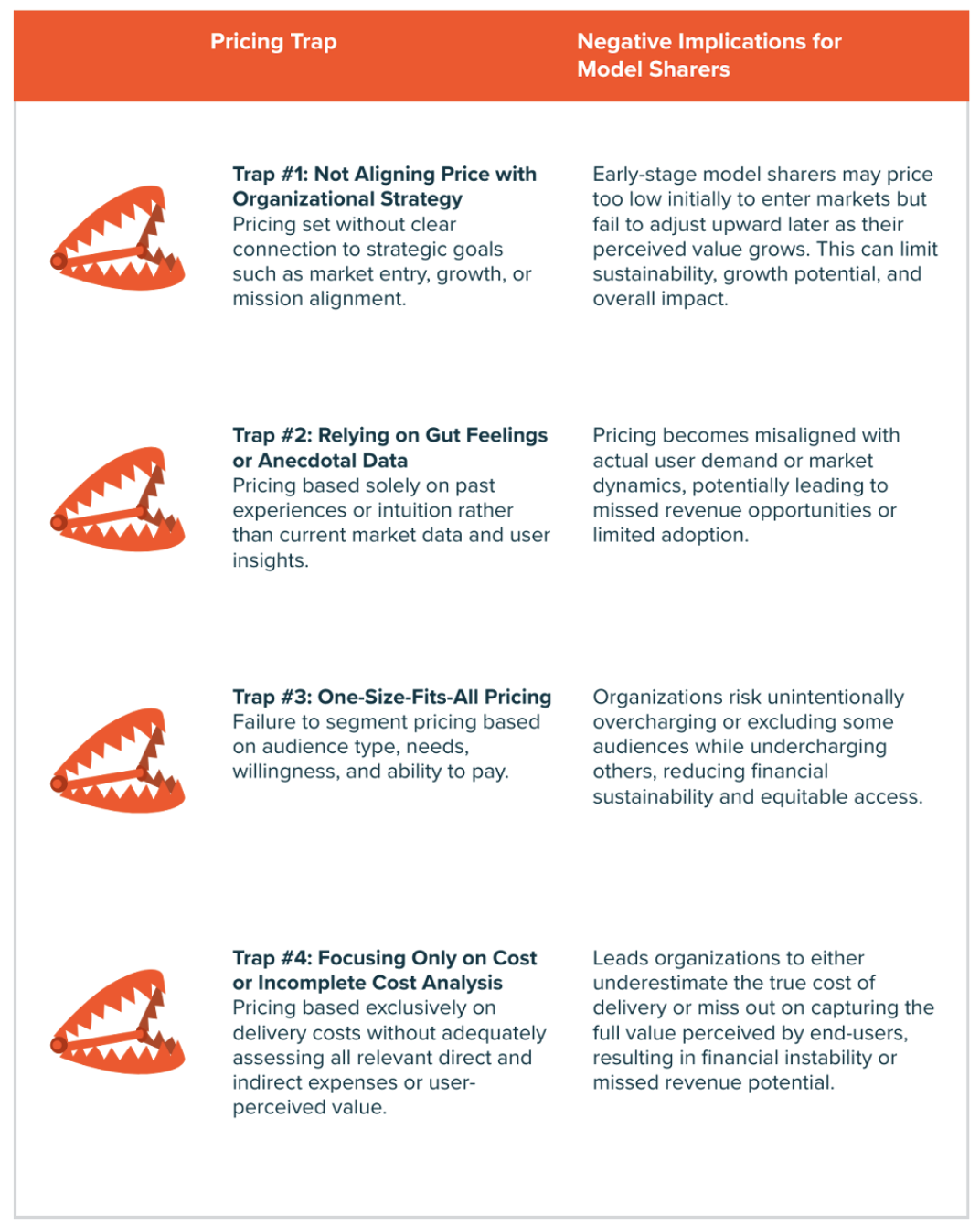
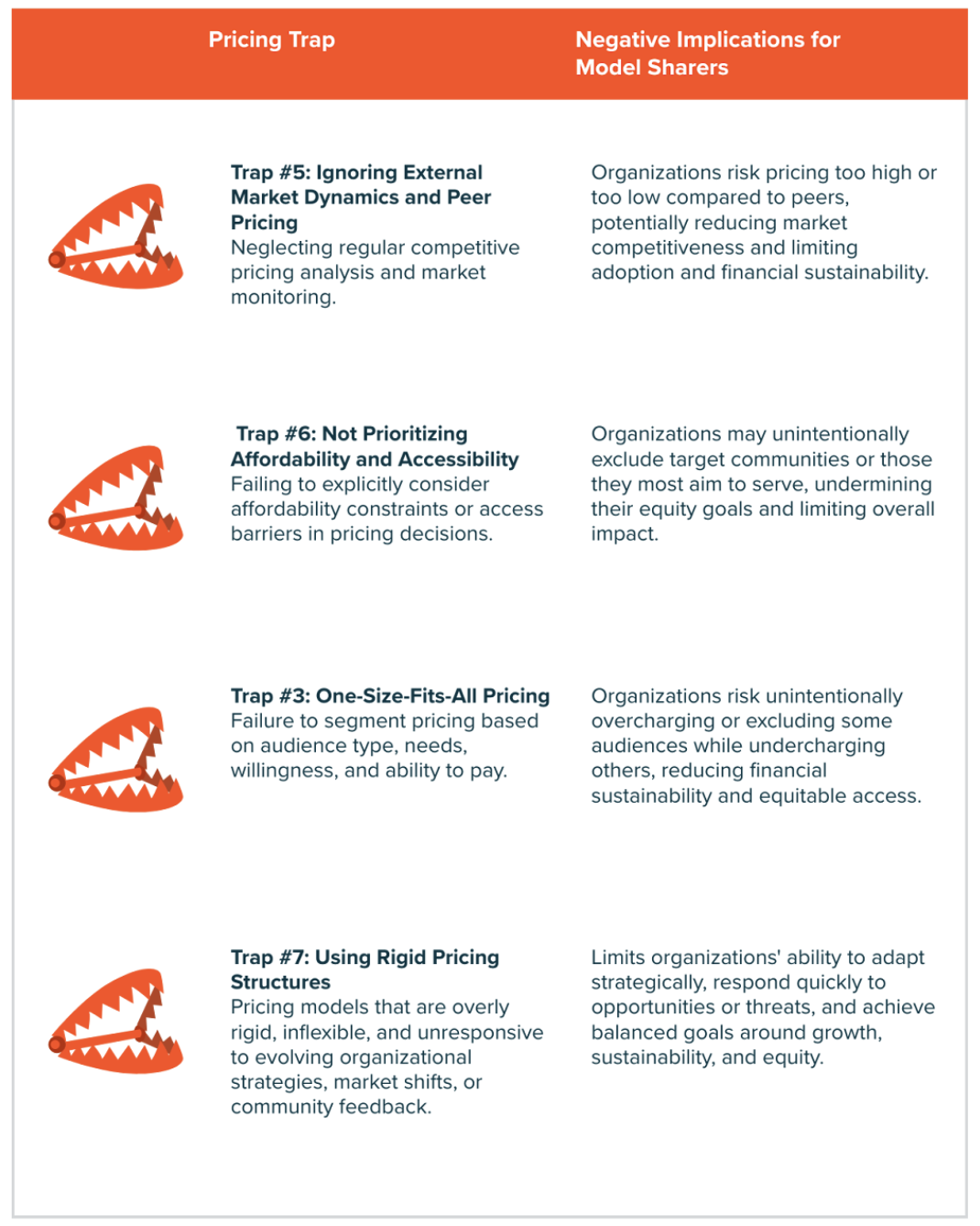
Pricing Benchmarks
Explore high-level benchmark data for common services offered by model sharers—like in-person coaching, curriculum licensing, virtual cohorts, and software subscriptions. This data reflects input from dozens of nonprofits and education service providers.
What’s inside:
-
Use it as a starting point for internal pricing discussions
-
Compare offerings to peer organizations
-
Identify potential gaps or underpricing
Note: This is a living resource that will be updated regularly as more data becomes available.
Pricing Strategies
There’s no one-size-fits-all approach to pricing. This guide shares 14 proven strategies—with examples—to help you choose what fits your goals, community, and offerings.

Explore Pricing Case Studies
Many model sharers wrestle with unclear costs, fear of raising prices, and how to offer discounts without undermining sustainability. These case studies illustrate how three different organizations applied the components of the Pricing Strategy Framework to navigate those very tensions.
Each example shows what it looks like to move from uncertainty or discomfort toward pricing strategies that are transparent, equitable, and aligned with long-term sustainability goals. Whether calculating true costs, introducing new pricing models, or communicating with partners, these stories highlight that pricing is not just a financial decision—it’s a strategic and relational one.
Knowing the Full Cost – Coaching & PD for Multilingual Learners
Organization Type
A model sharer providing coaching and professional development focused on multilingual learner success.
The Challenge
The organization had been offering site-based coaching and workshops at a flat fee of $7,500 per semester, based on what “felt affordable” to districts. But they noticed they were struggling to cover staff time and travel, especially when serving smaller or rural schools.
What They Did
Using NorthStar’s Financial Model Tool, they broke down the full cost of delivering a semester of coaching—including:
- Staff time (prep, delivery, debrief)
- Travel and lodging
- Admin and coordination
- Overhead (benefits, rent, tech, etc.)
They discovered the actual cost was closer to $11,000—almost 50% higher than what they were charging.

Result
Larger districts began paying closer to full cost. Philanthropic dollars were used to subsidize smaller schools. By surfacing and naming the true cost, the organization moved toward sustainability—without sacrificing access.
Changing Price Feels Risky – Whole-School Implementation Support
Organization Type
A model sharer providing comprehensive, whole-school implementation services—curriculum, coaching, and yearlong training across multiple levels.
The Challenge
The org had been charging $25K–$35K per site, regardless of school size or complexity. Their team realized this pricing wasn’t sustainable as they took on larger, more resource-intensive contracts—and they weren’t accounting for the full scope of support they provided to leadership, teachers, and instructional coaches.
They were ready to raise prices but felt anxious: “What if partners walk away? Will they think we’re being greedy?”
What They Did
The team hosted relationship-centered pricing conversations with five long-term district partners. They:
- Shared a simple, visual breakdown of true delivery costs
- Explained their desire to build long-term financial sustainability
- Asked for honest feedback about how the pricing shift would land
They also phased in the new structure over two years, offering added services (e.g., curriculum customization, asynchronous content) to reinforce the value.

Result
No existing partners left. In fact, two districts increased their level of engagement, once they saw the value and transparency in the new structure.
Discounts That Feel Fair – Licensing a Personalized Tutoring Model
Organization Type
A model sharer offering a personalized tutoring model via a licensing and training package for schools and community-based organizations.
The Challenge
The base price for an annual license was $12,000, which included digital access, initial training, and support calls. But some high-need schools couldn’t afford the full amount—and the organization was applying discounts inconsistently (“we just kind of felt it out based on the conversation”).
This created internal confusion and left staff worried they were being unfair or leaving money on the table.
What They Did
They created a discount rubric based on two criteria:
- Student population (e.g., >80% FRPL)
- Organizational type (e.g., school district vs. nonprofit partner vs. CBO)
Each type and tier had a clear max discount range (e.g., 25% for small CBOs, 10% for midsize nonprofits). They added a short intake form to standardize eligibility.

Result
Partners appreciated the clarity and transparency. Internally, the team felt more confident applying discounts—and the org increased its renewal rate by 15% in the first year.
Actionable Resources to Refine Your Pricing
Pricing Benchmark Data
Financial Shifts Presentation
Financial Model
Readiness Criteria Rubric
Offering Model Whiteboard
Financial Sustainability Vision Template
Resource Filters
Making the Shift Towards Financial
Sustainability
Explore the essential shifts model sharers are making to align their strategies, grow sustainably, and achieve long-term financial health. These 11 shifts guide organizations through the transformation needed to balance impact with financial sustainability. Use the gallery below to click through each shift and see where your organization stands on its journey toward sustainability.



